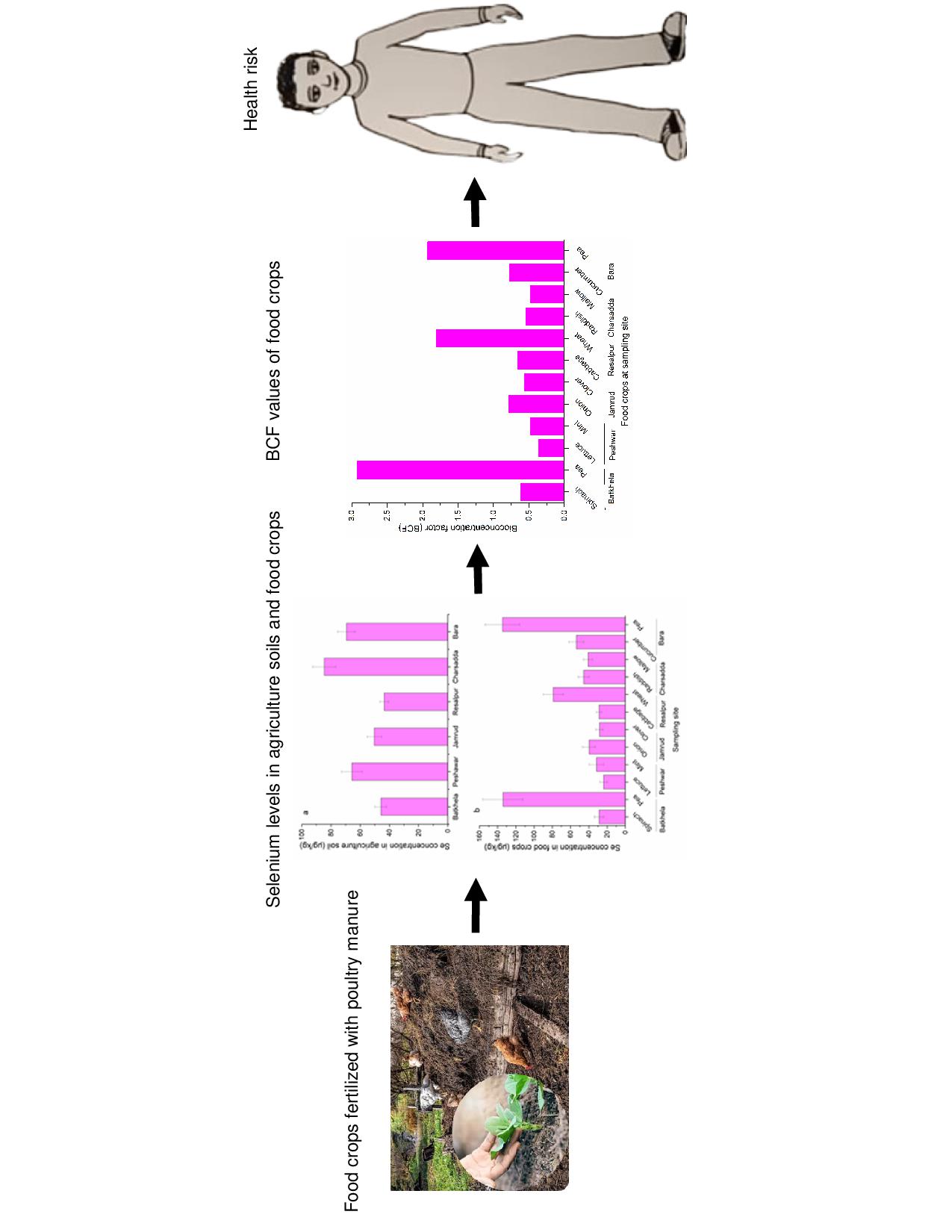
This study determined the levels of Se in agricultural soils (that are typically fertilized with poultry manure) and food crops such as peas, wheat, cucumbers, radishes, mallow, onions, mint, cabbage, spinach and clover were explored in Khyber Pakhtunkhwa Province (Pakistan), with inductively coupled plasma mass spectrometry. Selenium concentrations varied substantially (P<0.05) among all samples taken from the study area. In agricultural soils, high Se levels were observed in Charsadda and low in Resalpur, ranging from 45.9 to 84.7 µg kg-1 with an order of; Charsadda > Bara > Peshawar > Jamrud > Batkhela > Resalpur. In food crops, Se concentration was highest in peas of Batkhela and Bara, ranging from 23.9 µg kg-1 to 134.2 µg kg-1 with an order of; pea > wheat > cucumber > radish > mallow > onion > mint > cabbage > spinach > clover > lettuce. However, daily food intake and health risk indices showed that Se levels in all the collected samples were within the permissible guidelines (40-300 µg kg-1) established by the National Food Safety Standards US (2010). These findings indicate that food crops in the current study areas are free from the toxicity of Se and safe for human consumption.
Total file downloads: 10